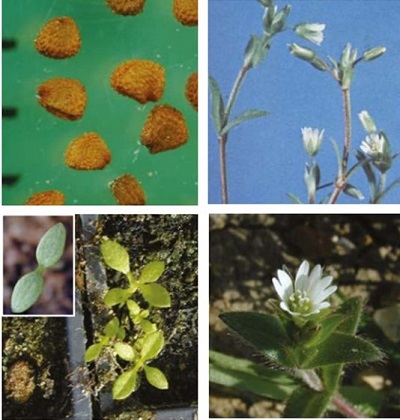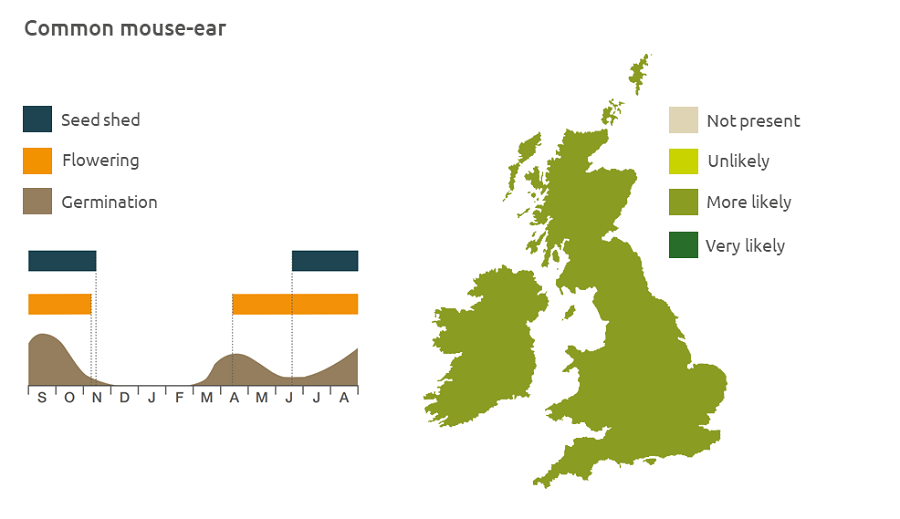- Home
- Knowledge library
- Distribution and biology of common mouse-ear in the UK
Distribution and biology of common mouse-ear in the UK
Common mouse-ear is a broad-leaved arable weed that has value to biodiversity. Find out how to identify and control it.
Overview
Common mouse-ear (Cerastium fontanum) is a perennial, which functions as an annual in arable fields. The seeds are dispersed by wind or eaten by birds. It can emerge throughout the year, given sufficient soil moisture.
- It has value to biodiversity
Description
It is a sprawling or upright, perennial dicotyledon 5–50 cm tall. The small oval leaves and the stem are covered with dense white hairs. The flowers have five white petals, with sepals the same length as the petals.
Key features
Young plant: The seedlings are very small and hairy.

Location and life cycle

Geographic distribution
Common mouse-ear grows to altitudes of above 1,000m in all areas of Britain, in fertile habitats including meadows, pastures, cultivated ground, dunes and shingle.
Soil type
It likes acidic, wetter soils, rich in nutrients.
Seed statistics
- Seed longevity: >5 years
- Seed weight: 0.1 mg
- Seeds/flower: 40
- Seeds/plant: 0–1,200
Management
Common mouse-ear is a perennial, which functions as an annual in arable fields. The seeds are dispersed by wind or eaten by birds. It can emerge throughout the year, given sufficient soil moisture.
For advice on herbicides, please speak with your agronomist or adviser.
When was this information last updated?
This page is based on content from the encyclopaedia of arable weeds publication. Since it was first released in 2008, the publication has been redesigned several times but not revised. However, it remains a good foundation for general information on the distribution and biology of weeds.

